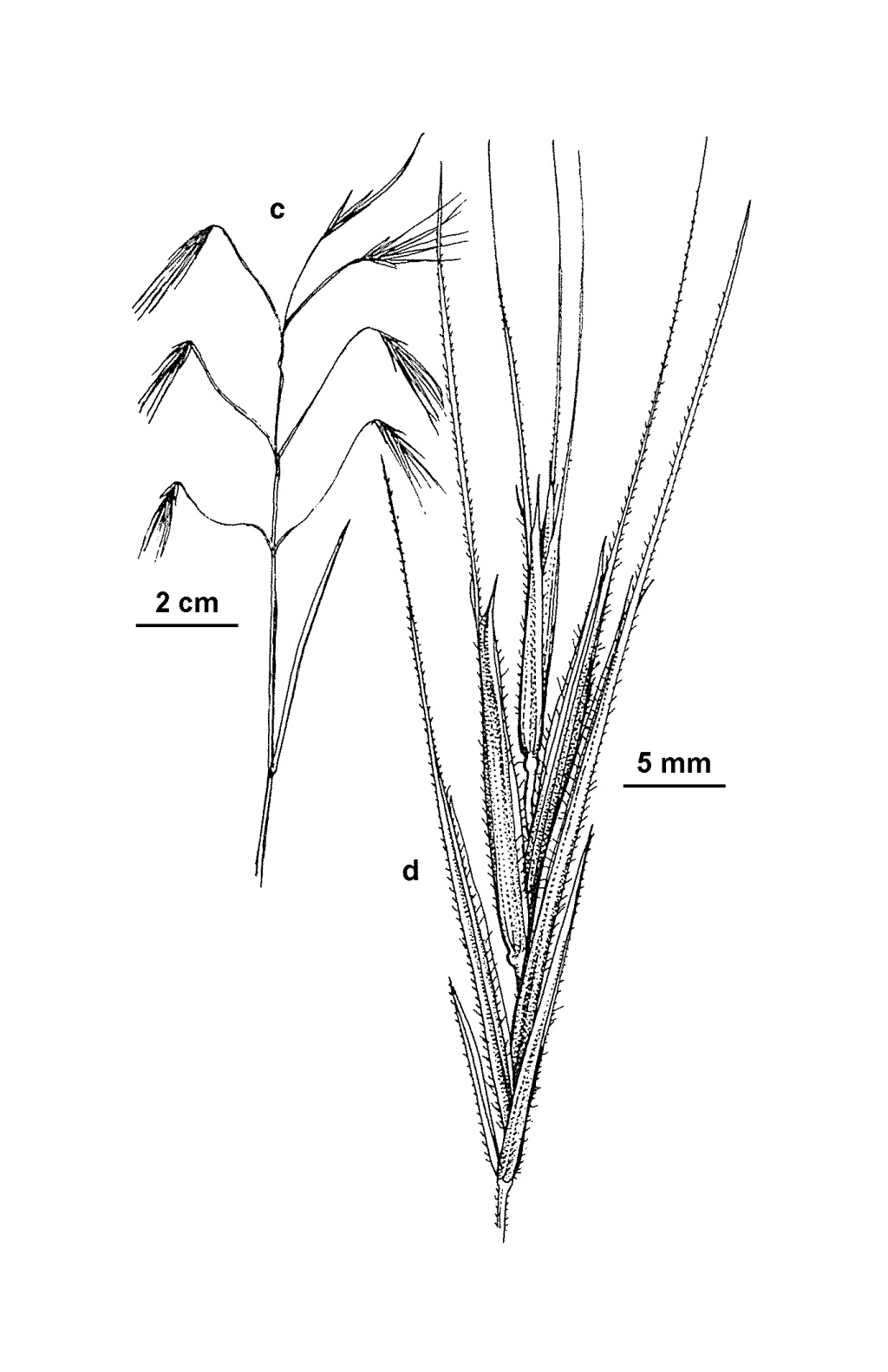Bromus sterilis
L. Sterile BromeWeakly tufted annual, culms erect, to 1 m high. Leaves with soft, spreading hairs; blade flat, to 20 cm long and 6 mm wide; ligule glabrous or with a few fine hairs, toothed, 1–3 mm long. Inflorescence a loose, open panicle, to 20 cm long (excluding awns), branches widely speading, longer than the spikelets. Spikelets 4–10-flowered, oblong, 20–35 mm long (excluding awns); lower glume 1-nerved, 6–14 mm long, upper glume 3–5-nerved, 10–20 mm long; lemma 14–20 mm long, excluding awn, dorsally rounded, smooth to moderately scabrous, with 2 membranous apical lobes 1–2 mm long; awn 15–30 mm long. Flowers Nov.–Feb.
Wim, VVP, VRiv, MuF, GipP, WaP, Gold, CVU, NIS, EGU, WPro, HSF. Also naturalised in WA, Qld, NSW, Tas., New Zealand, North America, South-west Asia. Indigenous to the Mediterranean region where widespread. Known in Victoria from a few collections (St Arnaud, Yarrawonga, Myrtleford, Trentham, Benambra areas and Mud Is. in Port Phillip Bay), but possibly more widespread. Most other records of the species result from misdetermined specimens of B. madritensis and B. diandrus.
Walsh, N.G. (1994). Poaceae. In: Walsh, N.G.; Entwisle, T.J., Flora of Victoria Vol. 2, Ferns and Allied Plants, Conifers and Monocotyledons, pp. 356–627. Inkata Press, Melbourne.
 Spinning
Spinning


